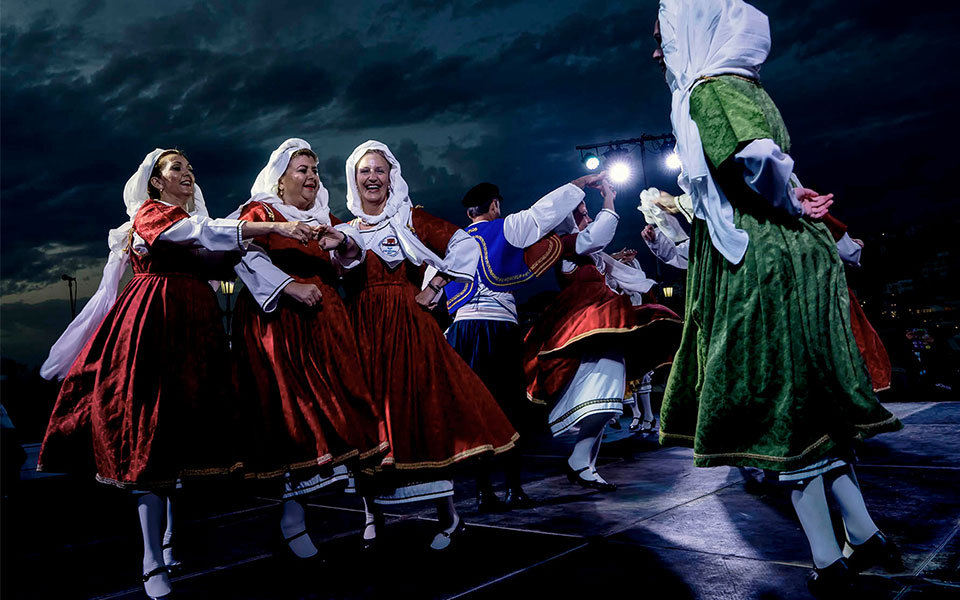
Mykonos, the Cyclades
This photograph was taken in front of the Mykonos Town Hall. It was taken during a concert by various folk bands from all of the Cyclades, brought together at the initiative of the Mykonos Municipality. I like this photograph a lot, because it presents a different aspect of Mykonos in that it doesn’t depict people dancing half-naked on the beach, like photographs of the island usually do. Mykonos retains many traditional elements of its culture, but for some reason its people seem to keep that fact a secret.
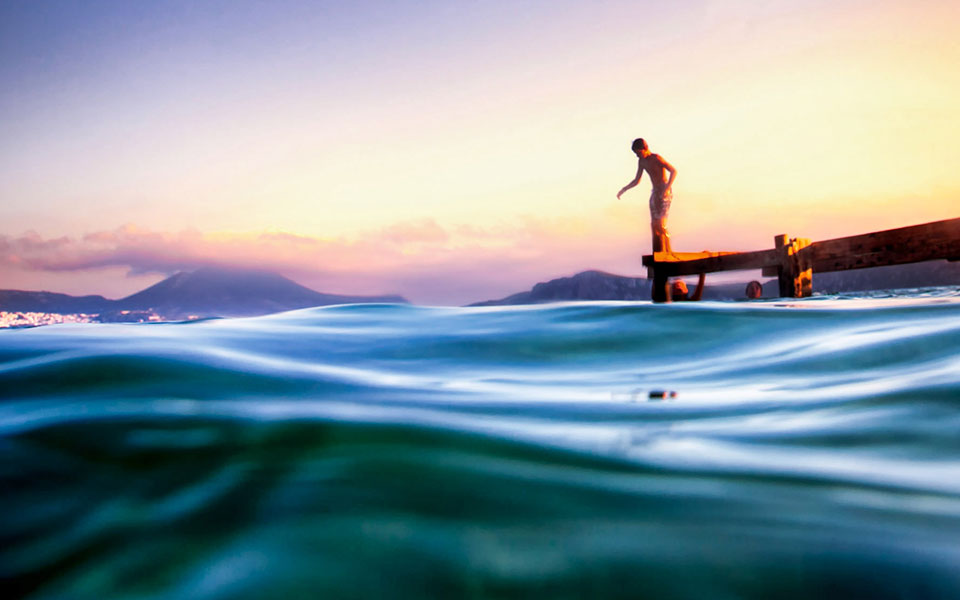
Pylos, the Peloponnese
The Golden Beach was one of the most beautiful, and least crowded, beaches I'd ever visited. I went there for the first time in 2014. This photograph is from that vacation. It’s a beach of excellent quality: even on the August 15th holiday, there weren’t more than 20 people on it. Unfortunately, this has already changed. When I went there again last year, there were many more swimmers.
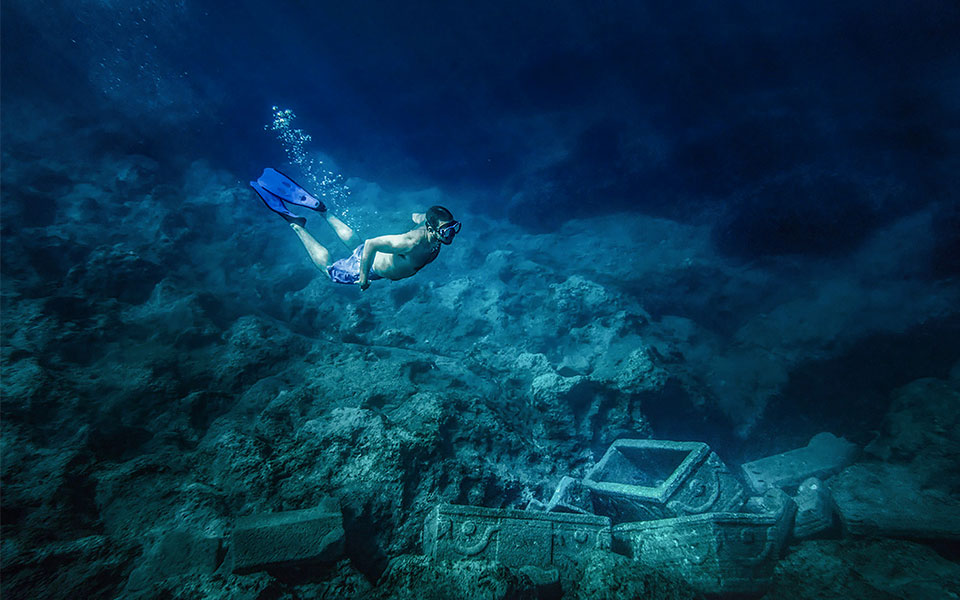
Sapientza, the Peloponnese
The area off Methoni's shores in general and the islet of Sapientza in particular is one giant underwater archaeological site, with columns and sarcophagi – you can see some of the latter in the photograph. I was truly surprised when I dove down 12 meters and saw that there were antiquities lying on the seabed 5-6 meters further down. The photograph was taken in 2016, when I began to get more seriously involved in underwater photography.
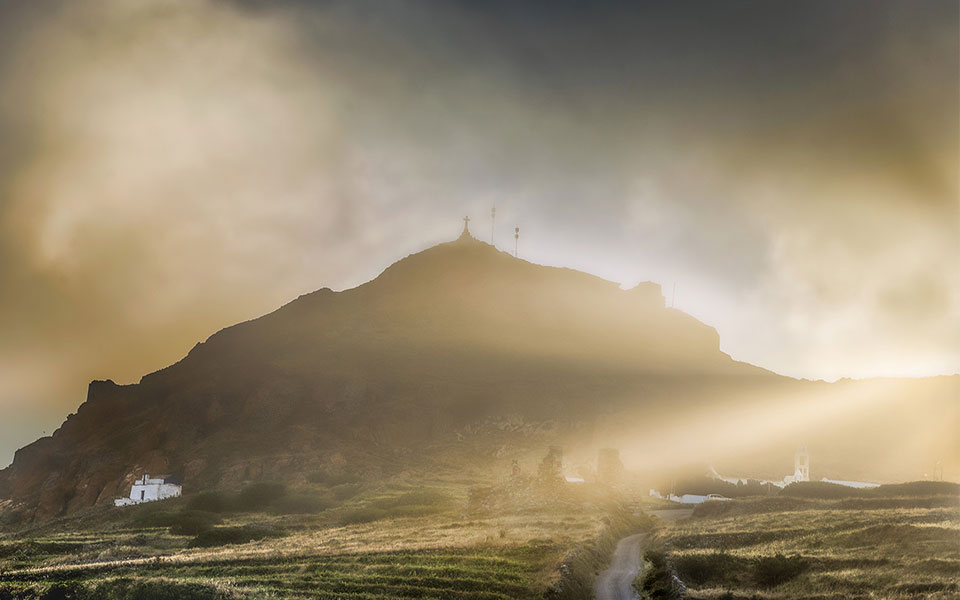
Tinos, the Cyclades
Tinos is my favorite island. And the high rock at Exobourgo is my favorite spot on the island. I find it magical. It's one of those places that mark you for life, although you don’t really understand why. This photograph was taken in the spring, before the crowds arrive and before the earth is burnt by the summer sun. The few but wonderful things the island has to offer are at their best during this season.
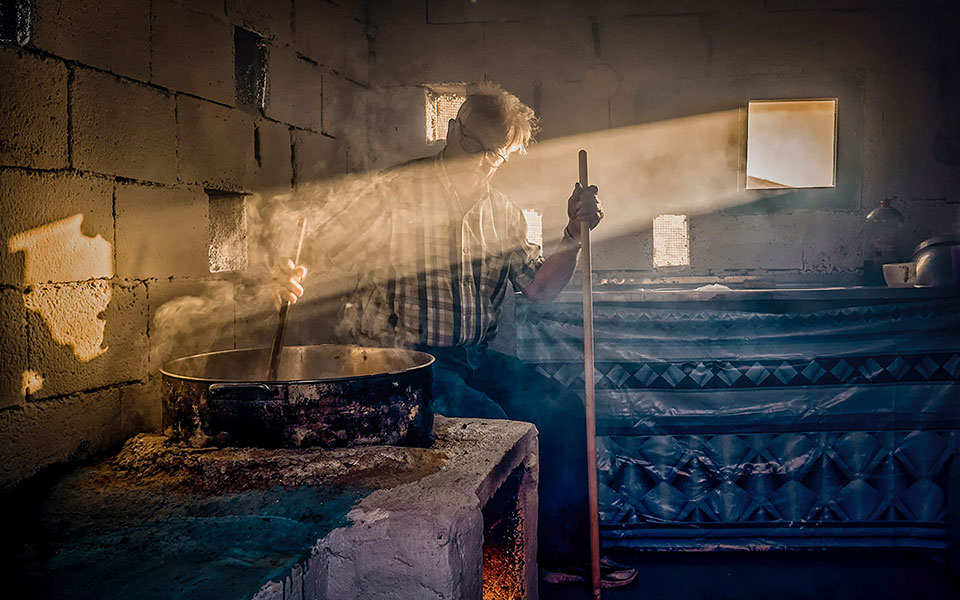
Kasos, the Dodecanese
This picture was taken in a “mitato”, a small hut used by shepherds. We asked a man there to show us how traditional “kasiotiko” cheese from Kasos is made. The places where you find such huts always evoke in me a sense of the rebirth of the earth, of the cycle of life. You see an old man, and you see animals grazing; the livestock will give birth, and they will get slaughtered. This is part of the cycle of life, which calms me, and which I find poetic. Before and after the visit to the mitato, we spent time listening to music played on a Kasiot lyra, a unique local instrument, which helped to make the whole experience even more moving.
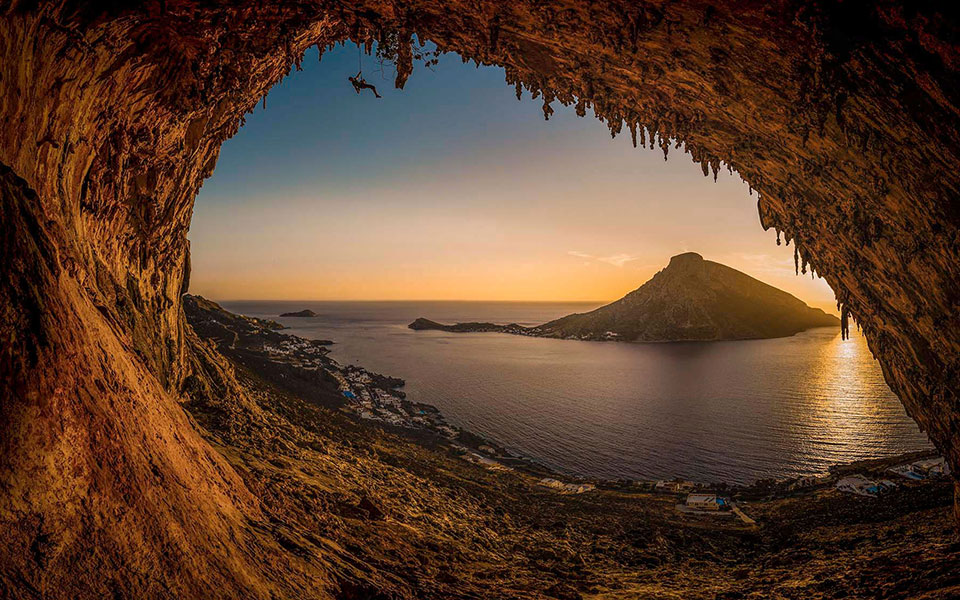
Kalymnos, the Dodecanese
You can see the Megali Spilia ("Big Cave") rock-climbing route in the photograph. Aside from it being a shot of a unique geological phenomenon, it's one of my favorite pictures because it reminds me of my encounter with the climber in the photo, a Frenchman who went everywhere barefoot. Going up to the cave, the ground was so rough that it cut up my shoes; he wasn’t wearing any. The soles of his feet were tougher than rubber. I remember him telling me that he only wears shoes on New Year’s Day. I like him even more than I do the photograph.
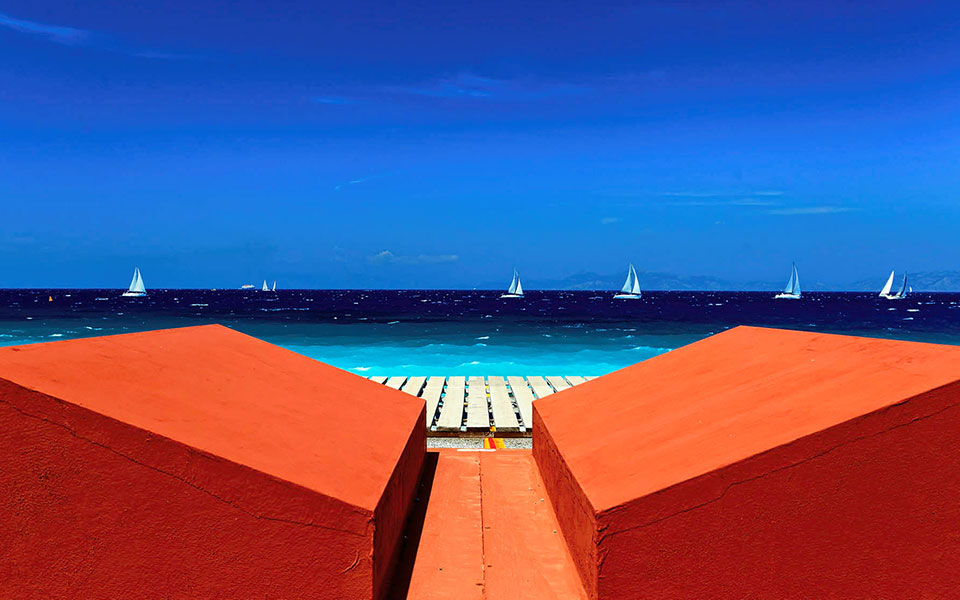
Rhodes, the Dodecanese
This is the beach at Ialysos. I like this photograph because the color works really nicely here. It was shot with a polarizing filter that deepens the blue tones. It’s an old tool that photographers used before Photoshop existed. I love this image because it makes you feel like you’re at the theater watching a play, with boats as the protagonists.
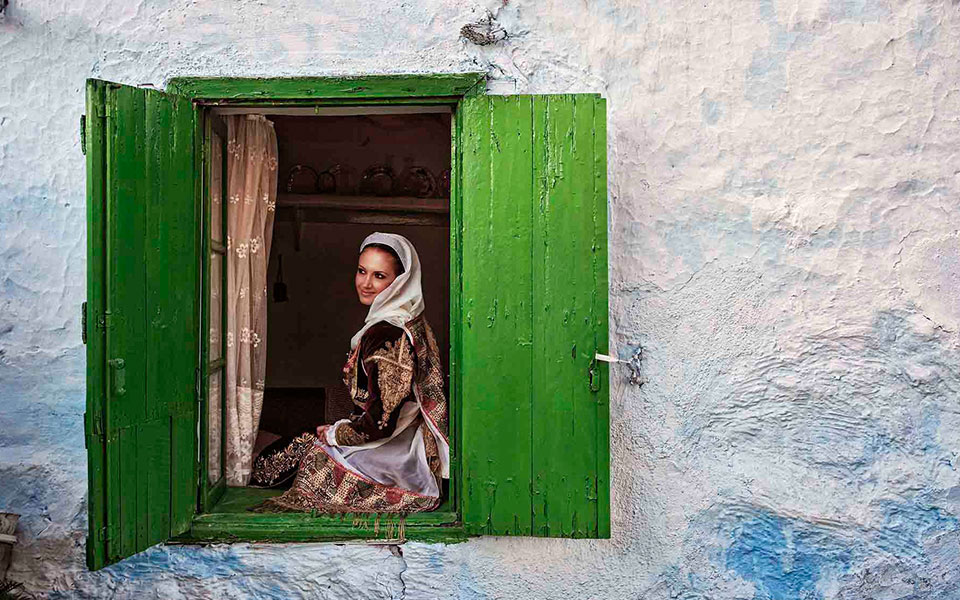
Salamina, the Saronic Gulf
An Arvanite (a people who speak an Albanian dialect and who settled in the southern mainland and the Peloponnese in the late Middle Ages) woman posing as a “Koulouriotissa” bride – “Koulouri” is another name for the island of Salamina. I love this shot because, aside from being a beautiful photo, it evokes a sense of tranquility reminiscent of the past. It's a wonderful representation of tradition without having anything nationalistic about it.
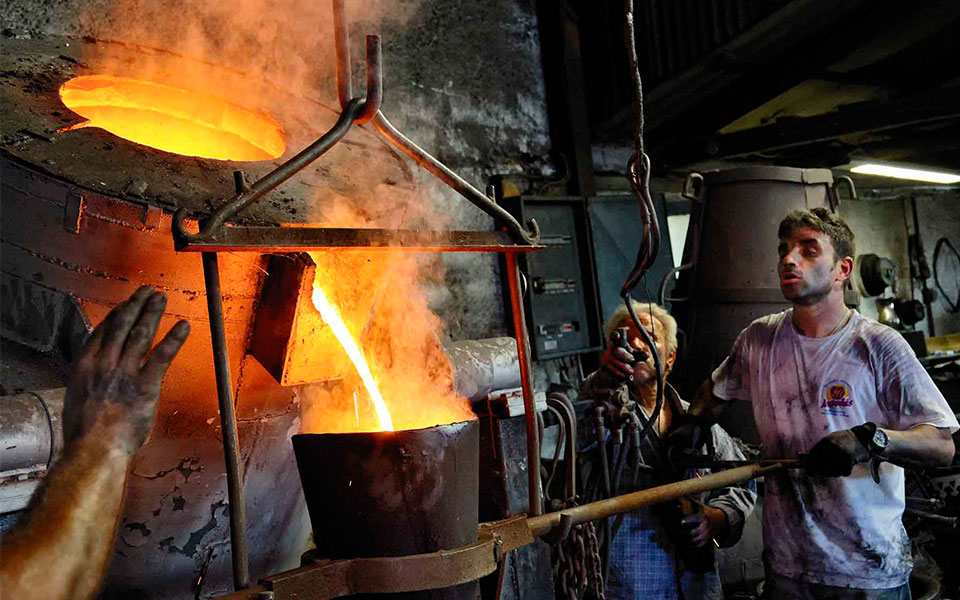
Hania, Crete
This may well be the last bell maker in Greece. It is one of my favorite pictures, because this man is the “Hephaestus”, the god of the forge, in my photographic collection; he takes metal, melts it and turns it into bells.
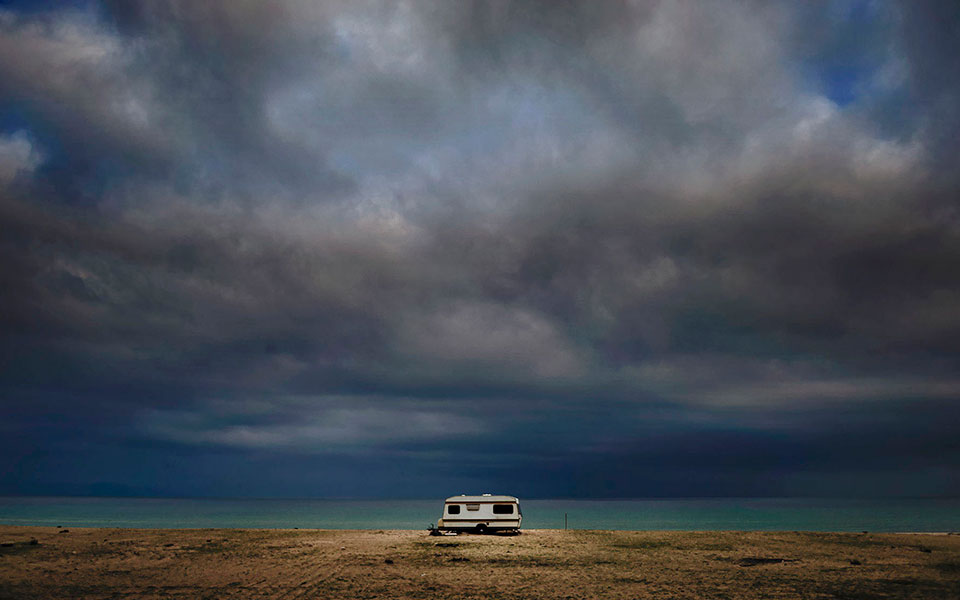
Olympiada, Chalkidiki
For me, this is the Greek version of the American dream. We live in a country where we can hop in a campervan or a motor home and live a different experience. Summer isn't just about beach bars, it’s also about this.
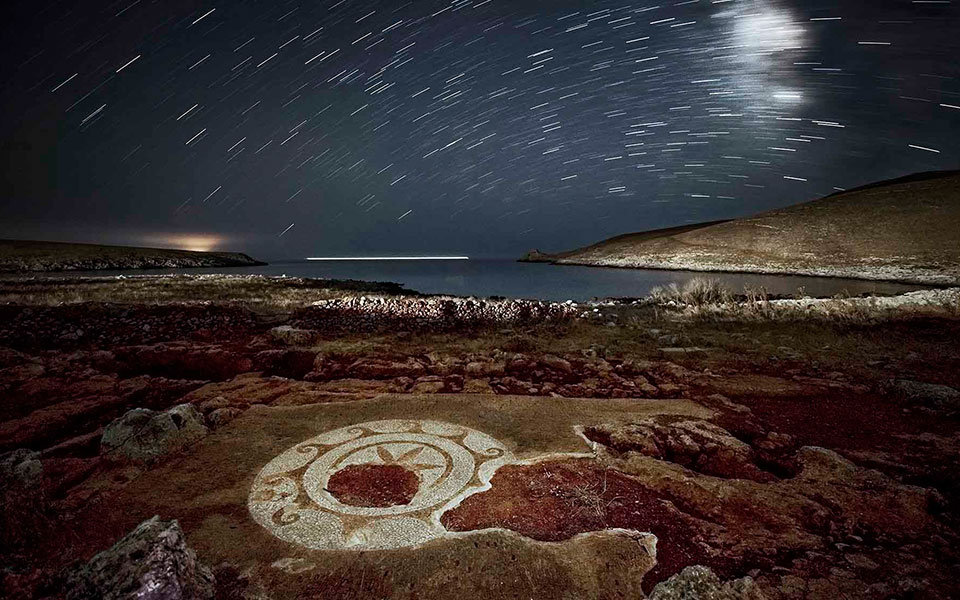
Cape Tainaro, the Peloponnese
For this particular assignment, I was asked to find Hades, the god of the dead. According to mythology, the gate that led to his kingdom was located at Tainaro on the tip of the middle peninsula of the Peloponnese. In the evening, I came across this accessible archaeological site and decided to shoot what you see above: a Roman mosaic, known as “the Star of Aria”. It represents my efforts to find Tainaros’ Hades.
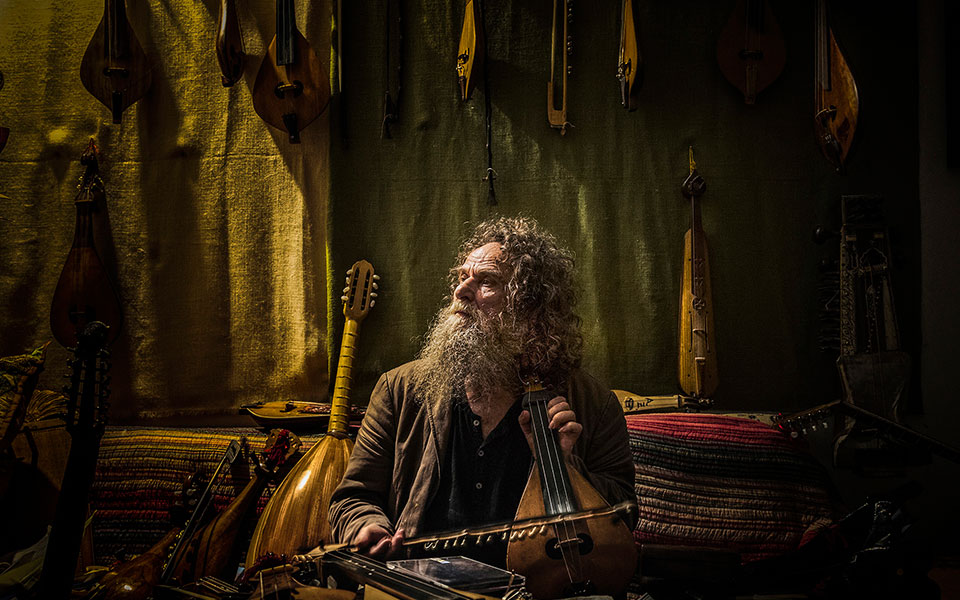
Irakleio, Crete
Psarantonis is Crete’s most famous lyra player. I looked for him for days, first in Hania and then at his house in Irakleio, where I sat with his wife, who told me: “He's unmanageable. He does this with everyone. Even with Nick.”
“Sorry, ” I asked, “who’s Nick?”
“Nick Cave!” she replied, with whom Psarantonis has indeed collaborated.
At some point he arrived, and we went into a small room to take the photograph. We had a drink, chatted about music, and managed to agree on most things. He started playing the lyra, and I took the photo. He didn’t stop. Instead, he continued playing for another ten minutes or so. It was one of the most meaningful musical experiences I've ever had.










